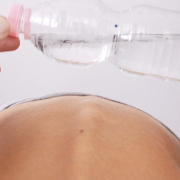Can we predict the behavior of the scoliotic curve after bracing in adolescent idiopathic scoliosis? The prognostic value of apical vertebra rotation
Every year, the Italian Scoliosis Study Group selects the best published papers on conservative spine treatment from the global scientific literature.
Here is the abstract from one of these papers.
Can we predict the behavior of the scoliotic curve after bracing in adolescent idiopathic scoliosis? Τhe prognostic value of apical vertebra rotationely treated patients with adolescent idiopathic scoliosis
Eustathios Kenanidis, Theodosios Stamatopoulos, Kleoniki Athanasiadou, Aikaterini Voulgaridou 3, Stavros Pellios, Panagiotis Anagnostis, Michael Potoupnis, Eleftherios Tsiridis
Spine Deformity, 2020 – DOI: 10.1007/s43390-020-00184-4
Purpose
We aimed to recognize radiographic and clinical prognostic factors of scoliotic curve behaviour after bracing.
Methods
Our prognostic study was based on the 25 years outcomes of a Boston braced AIS cohort between 1978 and 1993 that were previously reported. All patients were followed-up during bracing, at short term and 25 years post-bracing. We evaluated the impact of socio-demographic, clinical and radiological parameters on the loss of curve correction after bracing.
Results
Seventy-seven patients were reevaluated at 25 years post-brace. The mean scoliotic curve was significantly increased after bracing until the 25 years follow-up (p < 0.001). The mean loss of curve correction between the end of bracing and long-term follow-up was independent on the curve type, apical vertebra, premenarcheal status at bracing, time and duration of bracing, Cobb angle before or after bracing. The mean apical vertebral rotation after bracing was significantly related to the loss of curve correction (Spearman ρ = 0.2, p = 0.049). Apical vertebral rotation (Perdriolle method) greater than 20° post-bracing had a three times higher chance of progression > 5° compared with lesser apical vertebral rotation (OR 3.071, CI 0.99–9.51). The rotation of the apical vertebra, type and magnitude of the scoliotic curve after bracing explained 27.4% of the variance in the loss of curve correction post-bracing (R square = 0.274, p < 0.001).
Conclusion
A scoliotic curve is expected to lose some correction after bracing. The apical vertebral rotation post-bracing mainly affected the long-term curve behaviour. Adolescents with apical vertebral rotation greater than 20° after bracing may need further attention.
Level of evidence
Prognostic study, Level II
https://link.springer.com/article/10.1007%2Fs43390-020-00184-4





Leave a Reply
Want to join the discussion?Feel free to contribute!